
In this lesson, students use comprehension skills to discuss and respond to questions about a text.
- Subject:
- English Language Arts
- Material Type:
- Lesson Plan
- Provider:
- Achieve the Core
- Author:
- Achieve the Core
- Date Added:
- 04/23/2019

In this lesson, students use comprehension skills to discuss and respond to questions about a text.

Students will read a passage and examples, and then write to answer questions and apply a strategy based on the passage. This resource supports English language development for English language learners.

Students will read a passage and write to answer questions based on the passage. This resource supports English language development for English language learners.

Students will read a passage and use context clues to determine the meanings of words. This resource supports English language development for English language learners.

Students will read a passage, write answers to questions based on the passage, and write to explain and justify their position. This resource supports English language development for English language learners.

Students will read a passage and use context clues to determine the meaning of vocabulary in the passage. This resource supports English language development for English language learners.
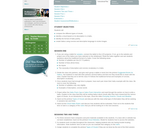
In this lesson, students research the various types of clouds using print and online materials. Then students write haikus using the Haiku App or the Haiku Poem Interactive, but they do not include the names of the clouds. The students share their haikus and guess what type of cloud each haiku describes.
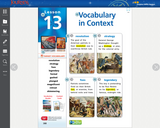
In this lesson, students read and comprehend the text "They Called Her Molly Pitcher" by Anne Rockwell. In the first activity (p. 388), students are introduced to content area vocabulary associated with the story. In the Anchor Text activity (p. 392), students focus on the target skill of conclusions and generalizations by using details to explain ideas that are not directly stated or that are generally true. In an associated activity (p. 402), students will read a play based on historical content and then compare it to the story "They Called Her Molly Pitcher."

In this lesson using Ben’s Dream, a picture book by Chris Van Allsburg, students highlight ten major landmarks of the world: the Statue of Liberty, Big Ben, the Eiffel Tower, the Leaning Tower of Pisa, the Parthenon, the Sphinx, St. Basil’s Cathedral, the Taj Mahal, the Great Wall of China, and Mount Rushmore. After reading and discussing Ben’s Dream, students identify the landmarks shown in the book and examine photographs of them. Working in small groups, students select one landmark to research. Using their research skills, students locate these famous landmarks, conduct further research on them, publish their findings using an online tool, and share that information with the class.

Students will be able to recite the first verse and paraphrase "The Star-Spangled Banner." Students will also be able to explain why Francis Scott Key wrote these words in 1814.
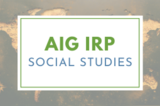
This lesson begins with a concept development task (Taba) designed to elicit ideas about systems. The students then apply this thinking to the structure of the US government as they learn about the 3 branches of government and the system of checks and balances. This lesson was developed by NCDPI as part of the Academically and/or Intellectually Gifted Instructional Resources Project. This lesson plan has been vetted at the state level for standards alignment, AIG focus, and content accuracy.

This course was created by the Rethink Education Content Development Team. This course is aligned to the NC Standards for 5th Grade ELA.

This course was created by the Rethink Education Content Development Team. This course is aligned to the NC Standards for 5th Grade English Language Arts.

This resource accompanies our Rethink 5th Grade ELA course. It includes ideas for use, ways to support exceptional children, ways to extend learning, digital resources and tools, tips for supporting English Language Learners and students with visual and hearing impairments. There are also ideas for offline learning.
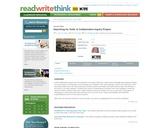
Per the ReadWriteThink website: In this collaborative inquiry unit, the real gold is the inquiry skills and content area knowledge that students develop. The class works in small groups, each focusing on one aspect of the same big topic, such as the Gold Rush. After skimming related texts, the class brainstorms people, places and things associated with the topic and develops a list of five or six main subtopics. Students then work in small groups to research one of the subtopics, practicing specific research skills as they work. Finally, students choose an activity, such as an oral report, trivia game, or newspaper, to teach what they have learned to the rest of the class. Group accountability and individual responsibility are built in to this lesson process. While this unit uses the Gold Rush as an example, any event or geographical area could be substituted.

In this unit, students learn how standard of living increases as a result of international trade and how international trade creates independence.

The last core strand of social studies is the one we will be focusing on mostly this year...history! Your studies will be focusing mainly on American history. It is often said that history is written by the victors. Historians must look at everything they can to come to conclusions about what happened in the past. Historians become writers, teachers, public speakers, and public servants in many ways. The following section explains the work of historians and details about their studies.
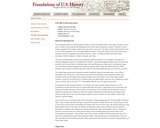
In this lesson, students will develop skills for historical and geographical analysis, with regard to Virginia's central role in the Civil War, including the ability to: a) identify and interpret primary and secondary sources to understand events in history; b) determine cause and effect relationships; d) draw conclusions and make generalizations; f) sequence events in Virginia history; g) interpret ideas and event from different historical perspectives; h) evaluate and discuss issues orally and in writing; i) analyze and interpret maps to explain relationships among landforms, water features, climatic characteristics, and historical events.

This 5th Grade Social Studies Unit supports the understanding of the role of various people, events, and ideas in shaping the United States.
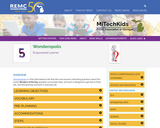
Wonderopolis is a free informational site that asks and answers interesting questions about the world. Wonders of the Day questions are posted daily, and each is designed to get kids to think, talk, and find learning moments in everyday life.